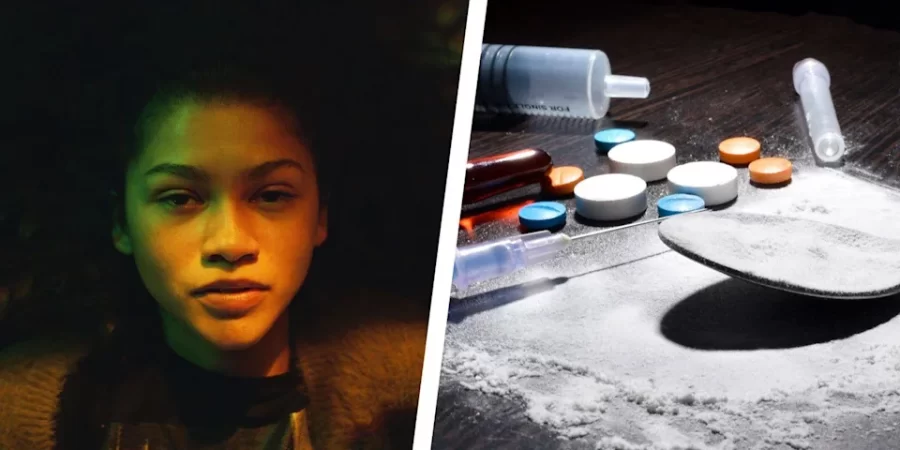A Darker Side of Addiction
Since the 2000s, teen-targeted TV shows have not shied away from portraying sex, drugs, and alcohol consumption, and whilst concerns have been raised about the potential negative effect on teens, these shows continue to illustrate such themes. Recently, popular shows such as Riverdale, Outerbanks, 13 Reasons Why, and most notably, Euphoria, have shown almost every aspect of addiction, yet often fail to show the darkest side of it.
Addiction, the fact or condition of being addicted to or dependent on a substance, thing, or activity, is more common than you think: 21.2 million Americans are currently suffering from some form of addiction. At first glance, addiction seems alien and far-fetched, but simply “trying drugs” or drinking alcohol once or twice can lead to a downward spiral of loss and despair. Hit Netflix show, Outer Banks, shows drinking alcohol as a frequent social paradigm, and although it can be like drinking at cocktail events or other adult parties, the inevitable spiral of addiction is both hard to avoid and come out of.
Riverdale, another trending show produced by CW, portrays underage drinking and fake drugs named Jingle Jangle (a stimulant akin to Adderall) and Fizzle Rocks (another highly addictive drug that’s mixed with candy). Many of the show’s main characters, teenagers, are seen taking such drugs in addition to spreading them, with benefits including stimulating the brain, increasing energy, and bettering sexual performance. What the show fails to show is the terrible effects of addiction and the usage of drugs: nausea, strained relationships, failing organs, mental confusion, brain damage, seizures, heightened desperation anxiety, depression, diabetes, and more. Every aspect of a drug addict’s life slowly detaches from them, and they are left even more dependent on the substance.
Euphoria, an HBO Original Hit TV Show, does not shy away from any type of explicit content, as they talk about the twisted realities of high school students and their battles. Rue, Euphoria’s narrator and main character, battles with addiction to stimulant drugs like methamphetamine, cocaine, MDMA, and amphetamine. This show, generally unlike the others, also portrays the dark side of addiction. The feeling is euphoric (an ode to the name of the show), but it comes with its consequences.
In Season 2 Episode 5, viewers see the desperation that addiction causes as they watch Rue spiral downwards. In the episode, Rue’s girlfriend, friend, and family try to set up an intervention where Rue hits her mother, throws a violent fit, breaks up with her girlfriend, verbally abuses all present, and destroys her home. Throughout the episode, she continues fracturing her other friendships, eventually resorting to theft to come up with the money for drugs. She then makes her way to her drug dealer and ends the episode narrowly escaping human trafficking — a scary, but entirely possible reality for addicts, especially women.
This episode should serve as a reminder to young adults and teens when they consider trying an illegal or unprescribed stimulant to get a quick “buzz” or “high” or trying alcohol at a social event. Although it seems fun, the repercussions are not. Death, depression, and mental instability are some of the most common effects of long-term drug use. Do not let this happen to you. There is an increase in drug-related deaths per year and in 2019, almost 71,000 people died from drugs just in the United States. For alcohol, the number is even larger; 95,000 people died from alcohol addiction, making it the third-leading preventable cause of death just in the US (Alcohol Facts and Statistics, National Institute on Alcohol Abuse and Alcoholism). The death and despair that stem from addiction is entirely preventable.

Belsem is a senior who is extremely excited about bringing a new type of media to the Banner for its second year. Belsem cannot wait to guide Banner writers...



